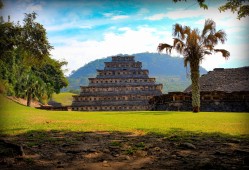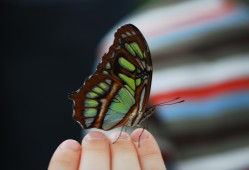The Beauty and Significance of Butterflies in Our World
- 百科大全
- 2025-07-24
- 40
Butterflies have long been a symbol of beauty, transformation, and the fleeting nature of life. Their delicate wings, vibrant colors, and mesmerizing flight patterns have captured the imagination of poets, artists, and naturalists alike. In this essay, we will explore the various aspects of butterflies, from their scientific classification to their cultural significance, and discuss why they are such an integral part of our world.
Butterflies belong to the order Lepidoptera, which also includes moths. There are over 18,000 known species of butterflies worldwide, and they can be found on every continent except Antarctica. These insects are characterized by their large, often brightly colored wings, which are covered in tiny scales that give them their distinctive patterns and hues. The wings of a butterfly are not just for show; they are also functional, providing the necessary lift and maneuverability for flight.
The life cycle of a butterfly is a fascinating process that involves complete metamorphosis. It begins with the egg, which is typically laid on the leaves of a host plant. The caterpillar, or larva, hatches from the egg and spends most of its time eating and growing. As it outgrows its skin, the caterpillar molts, shedding its old exoskeleton for a new one. Once it has reached its full size, the caterpillar forms a chrysalis, or pupa, where it undergoes a remarkable transformation into an adult butterfly. This process, known as metamorphosis, is a symbol of rebirth and change in many cultures.

Butterflies play a crucial role in the ecosystem as pollinators. As they feed on nectar from flowers, they inadvertently transfer pollen from one plant to another, facilitating the fertilization of plants and the production of seeds. This service is essential for the reproduction of many plant species and contributes to the biodiversity of ecosystems. Without butterflies and other pollinators, the world would be a less colorful and productive place.
Culturally, butterflies have a rich history and are often associated with various symbolic meanings. In many cultures, they represent change, growth, and the soul. The process of metamorphosis from caterpillar to butterfly is seen as a metaphor for personal transformation and the journey of the soul. In some Asian cultures, the butterfly is a symbol of love and joy, while in others, it is associated with the fleeting nature of life and the impermanence of all things.
Butterflies have also been a source of inspiration for art and literature. Their beauty and grace have been captured in paintings, poems, and stories throughout history. One of the most famous literary references to butterflies is in the novel "The Metamorphosis" by Franz Kafka, where the protagonist wakes up to find himself transformed into a giant insect, symbolizing the alienation and loss of humanity.
However, butterflies are facing numerous threats in the modern world. Habitat loss due to deforestation, urbanization, and agricultural expansion has led to the decline of many butterfly species. Climate change, pollution, and the use of pesticides also pose significant risks to their survival. Conservation efforts are crucial to protect these delicate creatures and the ecosystems they inhabit.
In conclusion, butterflies are more than just beautiful creatures that grace our gardens and wild spaces. They are essential players in the ecosystem, contributing to plant reproduction and biodiversity. Their cultural significance spans across continents and centuries, reflecting our fascination with their beauty and the transformative power they symbolize. As we continue to learn more about these enchanting insects, it is our responsibility to protect and preserve them for future generations to appreciate and study. The butterfly's journey from caterpillar to butterfly is a reminder of our own potential for growth and change, and their presence in our world enriches it with color, life, and wonder.
下一篇
窦淳,多面才华的生活达人













